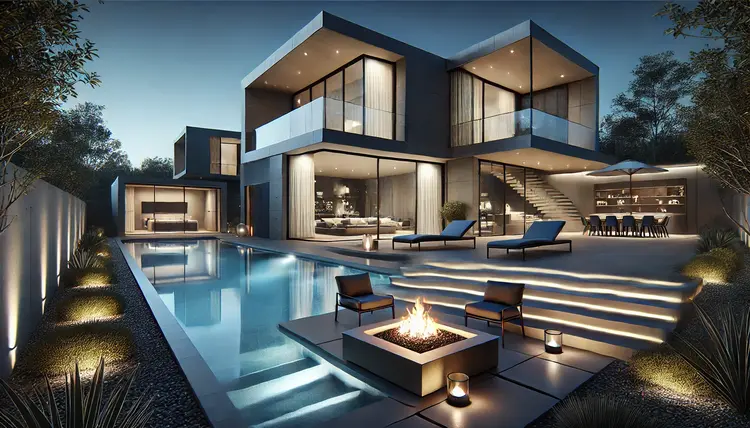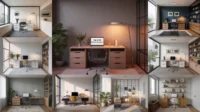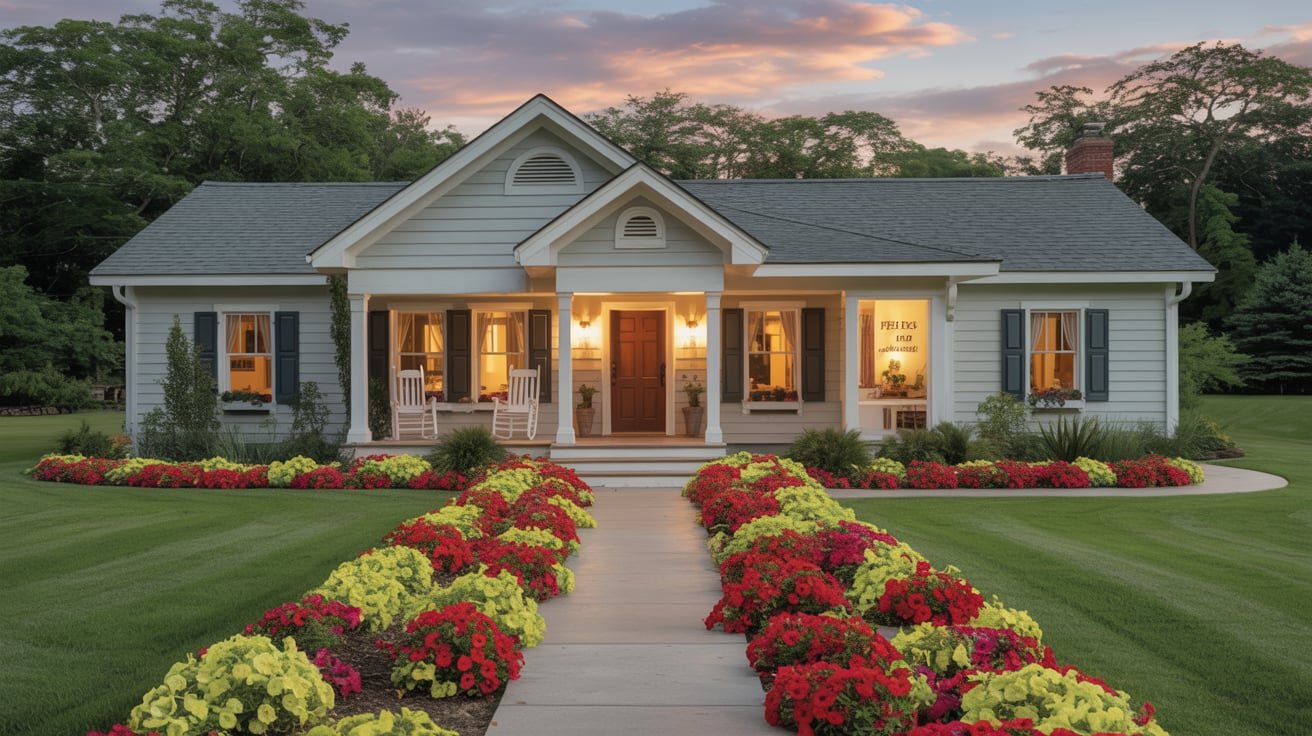Home Gym Design | Stylish & Functional Workout Spaces
Published: 19 Mar 2025
Introduction
Home gyms provide three key advantages to fitness enthusiasts who want to exercise in their homes through comfort, privacy and improved motivation. People who build their home gyms using proper design principles will get an attractive setup that boosts their workout performance and productivity. An ideal home workout space delivers both peak performance and comfort factors to people who want to perform strength training, cardio exercises or practice yoga.
1. Planning the Perfect Home Gym
Thorough planning is essential before building a home gym because it allows you to get the most out of your room space and functions and appearance.

1.1 Assessing Available Space
Starting by identifying an appropriate space for constructing the home gym is the initial requirement. It could be:
- A spare room (bedroom, basement or attic).
- A section of the living area.
- A renovated garage alongside an outside shed makes a suitable space.
- A multi-purpose workout corner in a home office.
The selected area needs to support all necessary gym equipment together with a proper movement area and storage solutions.
1.2 Defining Fitness Goals
The particular setup of a gym system begins with understanding individual fitness objectives among the following possibilities:
- Strength Training – Requires weights, benches and power racks.
- The necessary tools for cardio workouts include treadmills together with stationary bikes or rowing machines.
- Flexibility & Mobility – Includes yoga mats, resistance bands and open space.
- The requirements for HIIT & Functional Training include adjustable tools with strong floors that support high-intensity movements.
- The procedures to select gym equipment and arrange things become optimized when one knows exactly what personal fitness goals are.
1.3 Budget & Cost Planning
The process of budgeting helps create a fully equipped gym along with preventing expenditures that lack purpose. Key cost factors include:
- Gym equipment & accessories.
- Flooring, lighting & ventilation.
- Wall decor & organization tools.
- Budgeting for gyms through proper planning allows avoidance of excessive expense and promotion of high-quality gym facilities.

2. Home Gym Layout & Design Ideas
The arrangement of home gym equipment creates better comfort conditions along with easier movements and better facility organization.
2.1 Open Layout for Free Movement
Workers should have adequate space that prevents limits when moving through their exercise area.
Arrange equipment strategically to avoid congestion.
Empty spaces should be reserved for bodyweight exercises plus stretching activities.
2.2 Functional Zoning
- Creating separate workout zones improves functionality:
- Cardio Section – Dedicated area for treadmills, bikes or elliptical machines.
- Strength Training Zone – Equipped with free weights, benches and power racks.
- Yoga & Recovery Area – Includes mats, foam rollers and resistance bands.
- Workout efficiency improves as well as the movement of clients throughout the gym when zoned areas are clearly established.
2.3 Multi-Purpose Design for Small Spaces
- You can conserve space by using equipment which folds into different positions.
- Wall-mounted racks installed above ceilings along with hooks create efficient storage opportunities.
- The implementation of sliding doors combined with dividers allows shared spaces to change their configuration.
- A smart layout design ensures functionality without overcrowding.

3. Essential Equipment for Home Gyms
The choice of equipment depends on three elements: space availability, fitness targets and funding capacity.
3.1 Strength Training Equipment
- Dumbbells & Kettlebells – Ideal for full-body workouts.
- Adjustable Weight Bench – Supports various exercises.
- Resistance Bands – Compact yet effective for muscle activation.
- Power Rack and Barbells represent an excellent choice when dealing with heavy weight training.
3.2 Cardio Machines
Inside workouts require Treadmills & Stationary Bikes as excellent equipment choices.
Rowing Machines allow users to activate multiple muscles simultaneously.
Simple jump rope setups known as Step Platforms along with traditional jump ropes remain affordable options for aerobic exercise.
3.3 Flexibility & Mobility Tools
Yoga Mats & Foam Rollers – Enhance flexibility and recovery.
Medicine Balls & Stability Balls – Improve balance and core strength.
A well-equipped home gym supports diverse workout routines.
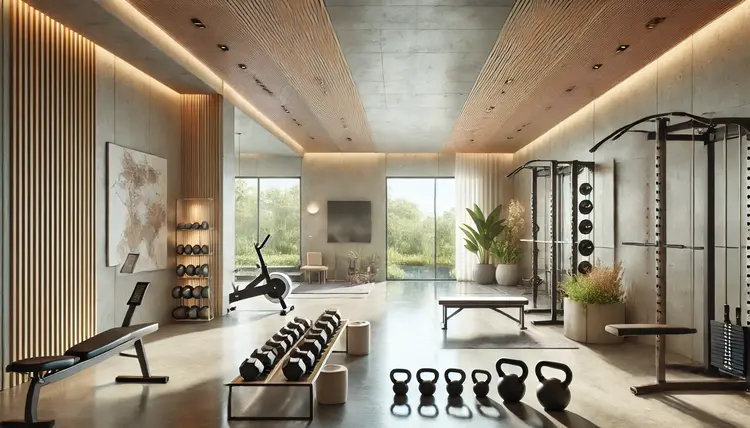
4. Flooring Solutions for Home Gyms
Flooring material determines both comfort and durability together with sound reduction for home fitness areas.
4.1 Rubber Flooring
Shock-absorbing and durable.
Protects floors from heavy weights.
Reduces impact noise.
4.2 Foam Mats
Yoga together with bodyweight workouts require soft padding for floor exercise.
Lightweight & budget-friendly.
4.3 Vinyl & Wood Flooring
Aesthetic appeal and easy maintenance.
The flooring option provides excellent support when engaged in dance exercises and pilates activities.
Proper installation of flooring protects users from accidents and delivers better workout comfort.
5. Creating a refreshing gym environment requires proper installation of lighting systems and ventilation units.
Exercise performance together with motivation levels improve when rooms have adequate lighting and ventilation.
5.1 Bright & Adjustable Lighting
LED ceiling lights provide overall brightness.
Wall-mounted lamps enhance visibility.
Smart lighting systems allow intensity adjustments.
5.2 Proper Ventilation
The combination of ceiling fans and air purifiers helps increase breathing air circulation.
Exhaust fans together with windows serve to eliminate humidity from gym spaces.
Dehumidifiers prevent dampness in basement gyms.
Correct ventilation and lighting optimization will establish an energizing clean workout area.
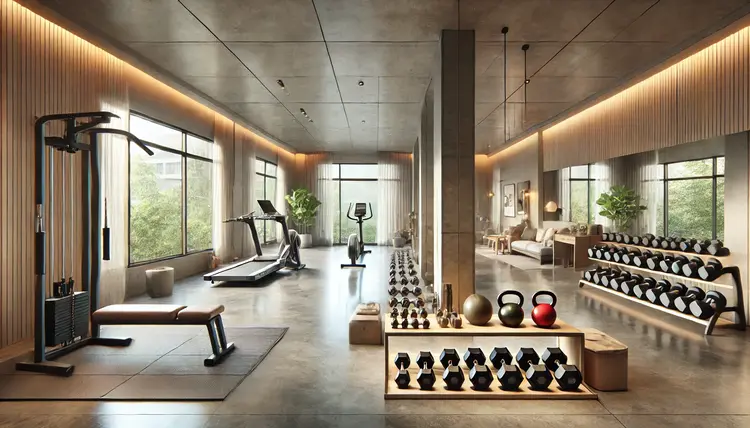
6. Home Gym Storage & Organization
A clutter-free gym improves focus and safety.
6.1 Wall-Mounted Racks & Shelves
Dumbbell racks combined with kettlebell holders enable you to maximize room space.
Floating shelves enable users to store their towels together with resistance bands and other accessories.
6.2 Hidden Storage Solutions
Under-bench compartments store equipment discreetly.
Storage baskets consisting of bins help arrange and store small accessories.
A gym systemized properly enables users to find their exercise supplies without effort.
7. Stylish Gym Decor & Personalization
A visually appealing gym boosts motivation and energy.
7.1 Motivational Wall Art & Mirrors
Inspirational quotes encourage consistency.
Large mirror surfaces allow a better understanding of physical space dimensions while helping users maintain proper exercise positions.
7.2 Smart Tech Integration
Thus Bluetooth speakers with sound systems maintain an energetic environment.
Workout exercises and virtual classroom sessions show on screens which are mounted on the walls.
7.3 Color Psychology in Gym Design
Bold colors (red, yellow) stimulate energy.
Cool tones (blue, green) promote relaxation.
Neutral shades (gray, black, white) create a balanced look.
A gym interior design that inspires workers results in increased workout consistency.
8. Home Gym Safety & Maintenance
A well-managed setting regarding safety combined with proper hygiene protects both people from hurt and equipment from damage.
8.1 Safety Precautions
Secure heavy equipment to avoid accidents.
Use slip-resistant flooring for stability.
Keep emergency first-aid kits easily accessible.
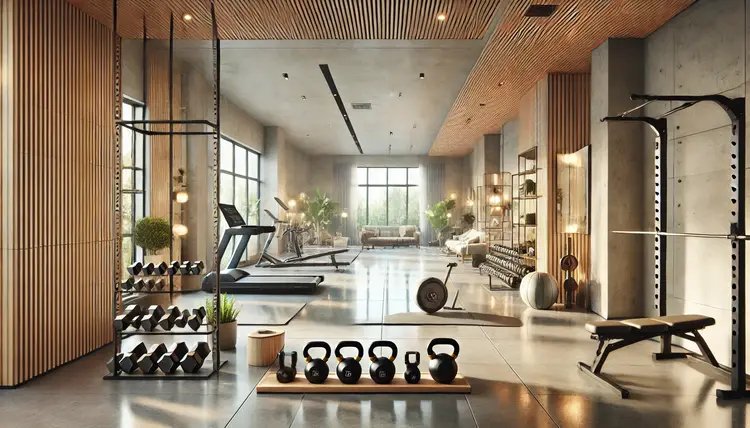
9. FAQs
What would be the most suitable spot to set up a domestic fitness area?
The optimal layout for a home gym includes using the spare room together with the garage and basement space or creating a designated workout area.
The appropriate dimensions for a fitness space in your home should measure between 150 to 300 square feet?
A 150-300 sq ft area serves as suitable space to place the necessary equipment with enough room for movement.
The perfect floor choice for home gym spaces is between rubber flooring and foam mats for their specific advantages?
The intersection of rubber flooring with foam mats gives users two beneficial aspects: impact reduction through rubber’s absorbent nature and foam’s comfort.
A combination of which wall art and smart lighting with motivational decor can help me achieve a stylish home gym aesthetic?
The combination of wall decor and smart lighting techniques with motivational home decorations will add style to your workout area.
A small home gym requires essential equipment that includes dumbbells resistance bands and a multi-functional bench?
Dumbbells, resistance bands, yoga mats and a multi-functional bench.
What are the best strategies to enhance ventilation within home workout facilities?
Home gym systems include the usage of windows as well as ceiling fans and air purifiers and exhaust systems.
The best approach to keeping home gym equipment in working order is detailed in seven steps?
Replacing equipment with regular cleaning combined with scheduled lubrication as well as durability inspections extends the lifetime of equipment.
Conclusion
A gym setup that achieves both style requirement and functionality boosts workout productivity together with fitness drive. Homeowners can design a workout area which inspires them by planning their space and making equipment choices along with storage improvements and correct lighting and ventilation setup.

- Be Respectful
- Stay Relevant
- Stay Positive
- True Feedback
- Encourage Discussion
- Avoid Spamming
- No Fake News
- Don't Copy-Paste
- No Personal Attacks

- Be Respectful
- Stay Relevant
- Stay Positive
- True Feedback
- Encourage Discussion
- Avoid Spamming
- No Fake News
- Don't Copy-Paste
- No Personal Attacks
